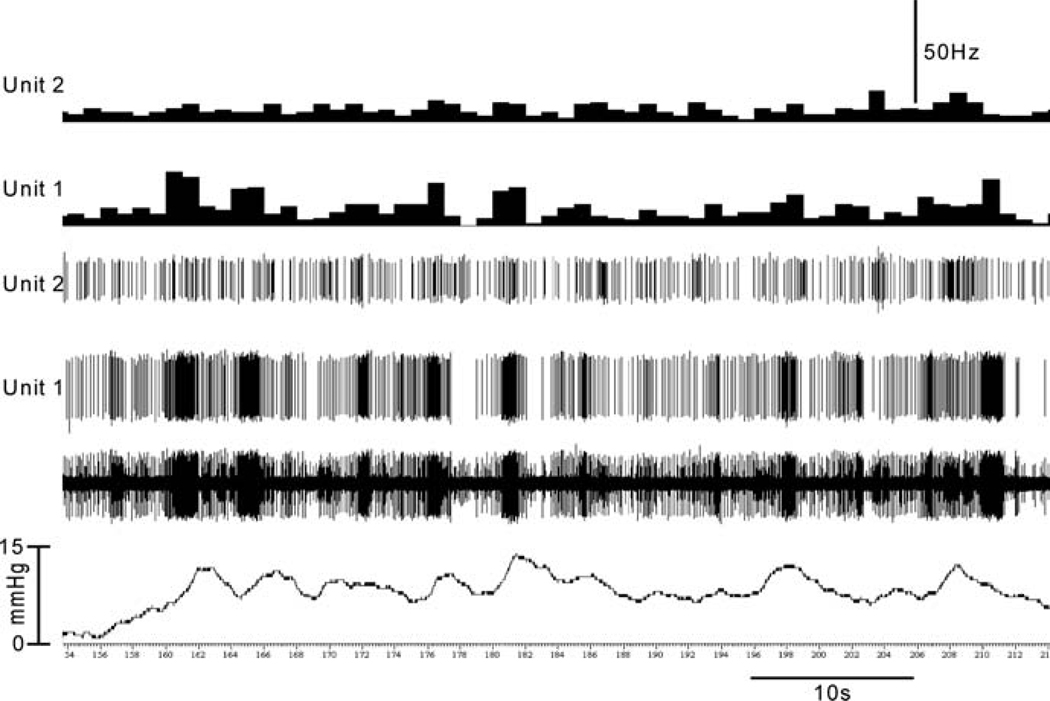Fig. 4.
Illustrates response characteristics of the same two units shown in figure 3 during intravesicle pressure change when the bladder is empty. Low-threshold afferent fiber (unit 1) responds to small increments of intravesicle pressure and exhibits a change in firing rate during the spontaneous contraction of the detrusor muscle. Therefore, these afferents can constantly monitor bladder filling to signal the urgency of micturition. On the other hand, high-threshold afferent fiber (unit 2) does not respond until the intravesicle pressure reaches a certain degree to signal the sense of discomfort and pain. (unpublished data of Sengupta JN)

